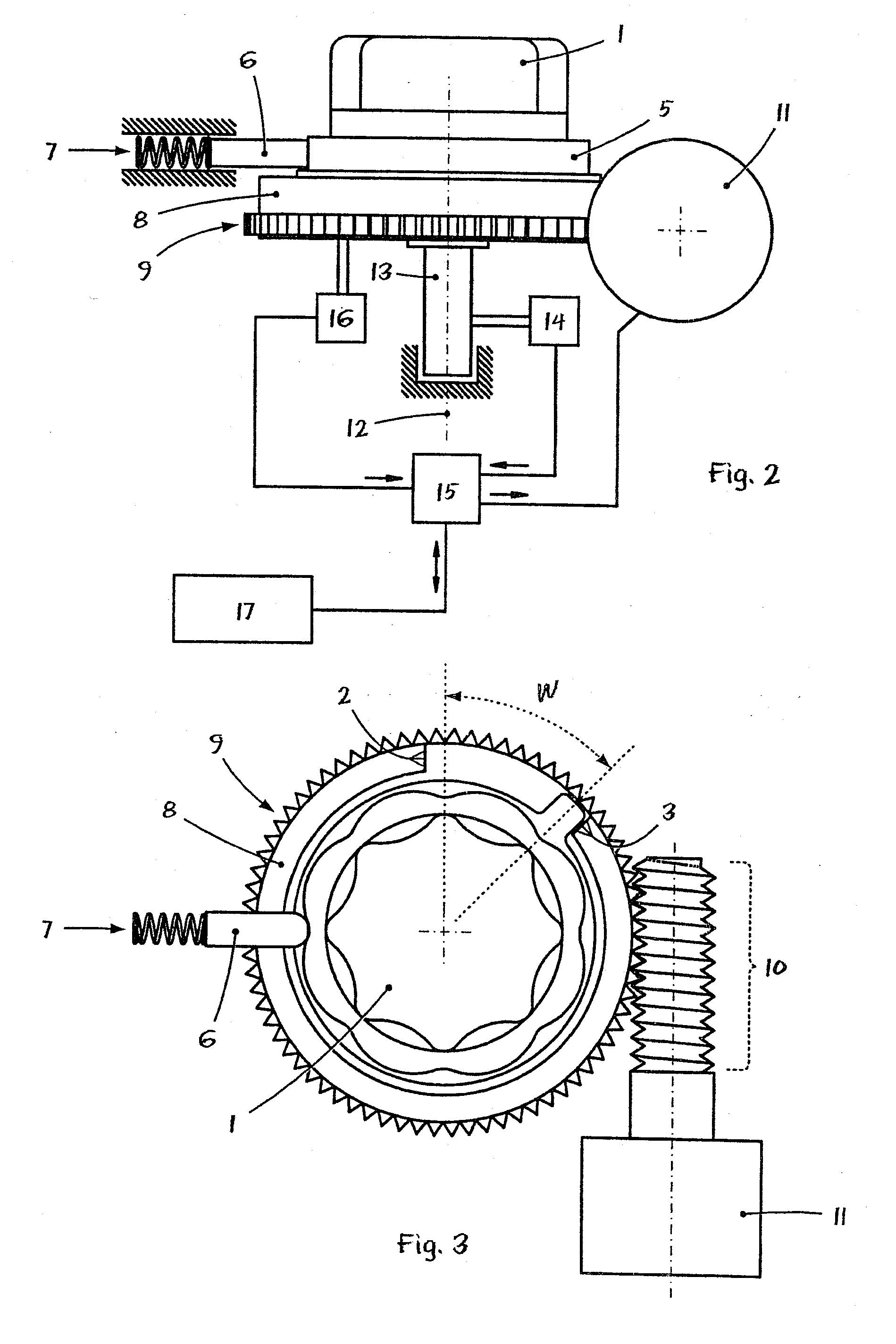Control Device
a technology of control device and control element, which is applied in the direction of mechanical control device, gearing, instruments, etc., can solve the problems of not being able to be assigned unambiguously, erroneous or non-functioning recognition or detection of the position of the control element, and the operating state of the windshield wiper cannot be changed. the effect of the switching state of the control elemen
- Summary
- Abstract
- Description
- Claims
- Application Information
AI Technical Summary
Benefits of technology
Problems solved by technology
Method used
Image
Examples
Embodiment Construction
[0048]Referring to the drawings in particular, FIG. 1 shows a schematic isometric view of the actuating element 1 and the stop means 2, 3 of a control device according to the present invention.
[0049]The actuating element, which is designed as a rotationally symmetrical turning knob 1 with recessed grip for the fingers and is used to control a technical system, not shown, is recognized at first. It shall be assumed for the sake of simple illustration only that the turning knob 1 being shown shall be used to switch a windshield wiper on and off.
[0050]The turning knob 1 is connected in one piece to a locking contour 5 extending circumferentially in an annular pattern, on which a spring-loaded locking piece 6 slides. The locking piece 6 and the compression spring 7 are arranged in a corresponding recess in the housing of the control device, which said housing is not being shown here. The locking contour 5 ensures a perceptible snapping in of the turning knob 1, in the sense of the ergon...
PUM
 Login to View More
Login to View More Abstract
Description
Claims
Application Information
 Login to View More
Login to View More - R&D
- Intellectual Property
- Life Sciences
- Materials
- Tech Scout
- Unparalleled Data Quality
- Higher Quality Content
- 60% Fewer Hallucinations
Browse by: Latest US Patents, China's latest patents, Technical Efficacy Thesaurus, Application Domain, Technology Topic, Popular Technical Reports.
© 2025 PatSnap. All rights reserved.Legal|Privacy policy|Modern Slavery Act Transparency Statement|Sitemap|About US| Contact US: help@patsnap.com



